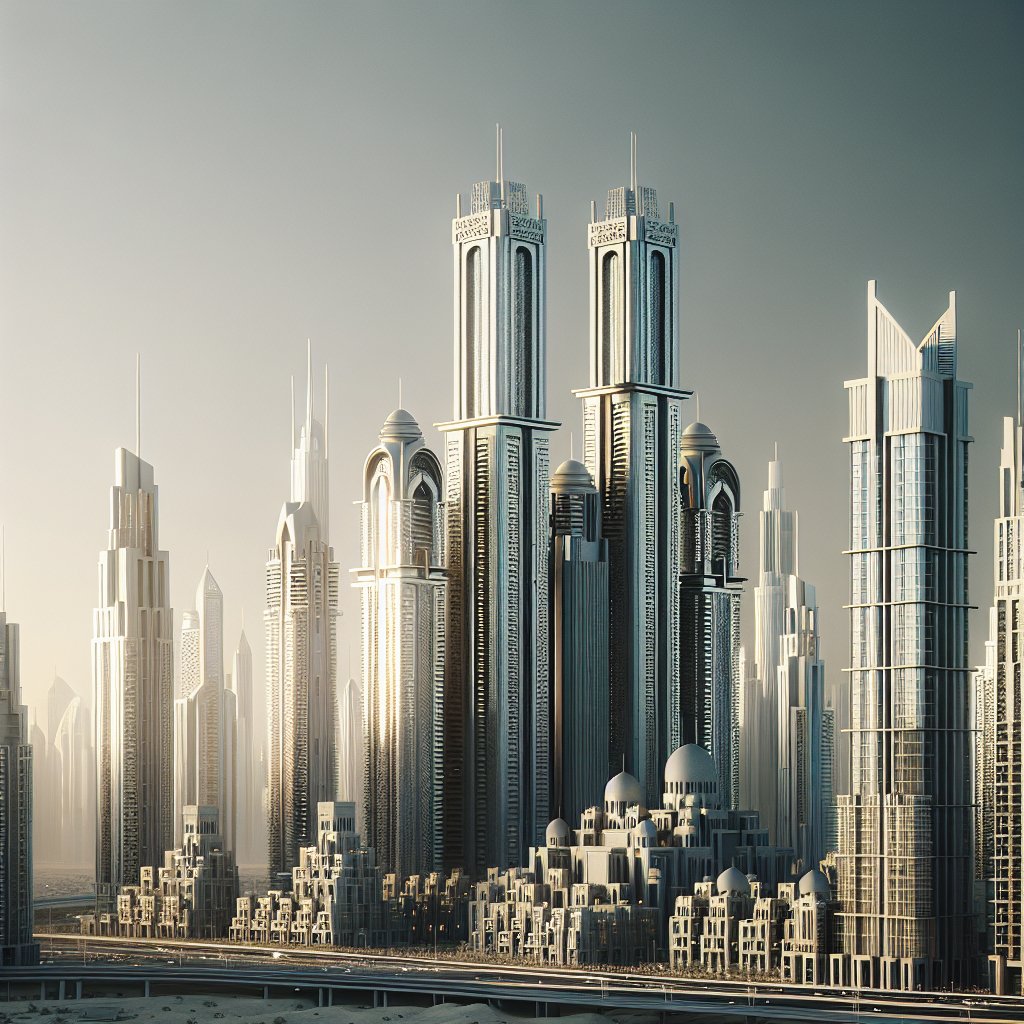Dubai, a city renowned for its futuristic skyline and luxurious lifestyle, is a fascinating blend of tradition and modernity, where Islamic influences are intricately woven into its contemporary architecture. This unique fusion not only reflects the city’s rich cultural heritage but also its ambition to be a global hub of innovation and design.
The Historical Roots of Islamic Architecture in Dubai
To understand the Islamic influence on Dubai’s contemporary architecture, it is essential to delve into the historical roots of Islamic architecture in the region. Islamic architecture is characterized by its emphasis on geometric patterns, intricate arabesques, and the use of natural light, all of which are designed to create a sense of harmony and spirituality. These elements have been integral to the architectural identity of the Middle East for centuries.
In Dubai, traditional Islamic architecture can be seen in the city’s older structures, such as the Al Fahidi Historical Neighborhood. This area, with its narrow lanes and wind-tower architecture, offers a glimpse into the past, showcasing how traditional Islamic design principles were adapted to the local climate and culture. The use of wind towers, for instance, is a testament to the ingenuity of Islamic architects in creating natural ventilation systems long before the advent of modern air conditioning.
As Dubai began to transform into a modern metropolis in the latter half of the 20th century, the challenge was to integrate these traditional elements into a rapidly evolving urban landscape. The result is a city that pays homage to its Islamic heritage while embracing cutting-edge architectural innovations.
Contemporary Interpretations of Islamic Design
In contemporary Dubai, the influence of Islamic architecture is evident in many of the city’s iconic structures. Architects and designers have creatively reinterpreted traditional Islamic motifs and principles to fit the modern context, resulting in buildings that are both aesthetically pleasing and functionally advanced.
One of the most striking examples of this fusion is the Burj Khalifa, the tallest building in the world. While its sleek, modern design is a symbol of Dubai’s futuristic aspirations, the building’s form is inspired by the Hymenocallis flower, a motif often found in Islamic art. The tower’s base is structured in a Y-shape, reminiscent of traditional Islamic geometric patterns, which not only enhances its aesthetic appeal but also provides structural stability.
Another notable example is the Jumeirah Mosque, which, while more traditional in its design, incorporates modern building techniques and materials. The mosque is a stunning representation of Islamic architecture, with its intricate stone carvings and majestic domes, yet it is equipped with state-of-the-art facilities to accommodate the needs of contemporary worshippers.
The Dubai Opera House, with its dhow-inspired design, is another testament to the city’s commitment to blending tradition with modernity. The building’s shape pays homage to Dubai’s maritime heritage, while its cutting-edge acoustics and technology make it a world-class venue for performances.
The Role of Islamic Art in Modern Architecture
Islamic art plays a crucial role in shaping the aesthetic of Dubai’s contemporary architecture. The use of calligraphy, arabesques, and geometric patterns is not only a nod to the city’s cultural roots but also serves as a bridge between the past and the present.
In many of Dubai’s modern buildings, these artistic elements are incorporated into the design in innovative ways. For instance, the Etihad Museum features a façade adorned with calligraphic inscriptions that tell the story of the UAE’s founding. This integration of art and architecture creates a narrative that is both educational and visually captivating.
Similarly, the Alserkal Avenue arts district showcases how Islamic art can be reimagined in a contemporary setting. The district’s galleries and creative spaces often feature installations and exhibitions that explore the intersection of traditional Islamic art and modern design, fostering a dialogue between the two.
Sustainability and Islamic Architectural Principles
Another significant aspect of Islamic influence on Dubai’s contemporary architecture is the emphasis on sustainability. Traditional Islamic architecture has always prioritized environmental harmony, with features such as courtyards, wind towers, and water elements designed to create comfortable living conditions in harsh climates.
In modern Dubai, these principles are being revisited and adapted to meet the challenges of sustainable urban development. The city is increasingly incorporating green building practices, such as the use of solar panels, energy-efficient materials, and water conservation systems, into its architectural projects.
The Sustainable City, a residential community in Dubai, is a prime example of this approach. The development combines traditional Islamic design elements, such as shaded walkways and communal gardens, with modern sustainable technologies, creating a living environment that is both culturally resonant and environmentally responsible.
The Future of Islamic-Inspired Architecture in Dubai
As Dubai continues to grow and evolve, the influence of Islamic architecture is likely to remain a defining feature of the city’s identity. The challenge for architects and designers will be to continue finding innovative ways to integrate these traditional elements into the ever-changing urban landscape.
Future projects, such as the Museum of the Future, are already showcasing how Islamic design principles can be reimagined for the 21st century. The museum’s torus-shaped structure, adorned with Arabic calligraphy, is a bold statement of Dubai’s commitment to innovation and cultural preservation.
In conclusion, the Islamic influence on Dubai’s contemporary architecture is a testament to the city’s ability to honor its past while embracing the future. This unique blend of tradition and modernity not only defines Dubai’s skyline but also serves as an inspiration for cities around the world seeking to balance cultural heritage with modern development.









